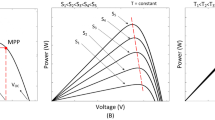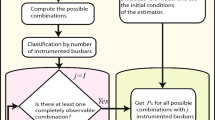Abstract
OFDM is a multicarrier transmission technique, widely preferred due to advantages like high data rate, less bandwidth consumption and channel robustness. IEEE 802.11a standard uses conventional OFDM which uses IFFT for generating orthogonal carriers and multiplexing. Due to extra bandwidth consumption by cyclic prefix in conventional OFDM, DWT has now emerged as new alternative over FFT. It offers advantages like increased spectral efficiency, better orthogonality and less bit error rate. Performance degradation due to frequency offsets has been reported in literature. Carrier frequency offset (CFO) arises due to Doppler shift and imperfect synchronisation of transmitter and receiver. CFO results in inter-carrier interference that effect BER. In this paper, we investigated the offset effect on conventional and DWT-based OFDM under different communication channels (AWGN and Rayleigh). Effect of different modulation techniques and wavelets on DWT-OFDM model is also analysed.









Similar content being viewed by others
References
Bhardwaj, M., Gangwar, A., & Soni, D. (2012). A review on OFDM: Concept, scope & its applications. IOSR Journal of Mechnaical & Civil Engineering, 1(1), 7–11.
Ingram, M. A., & Acosta, G. (2000). OFDM simulation using MATLAB. Atlanta: Smart Antenna Research Laboratory, Georgia Tech Atlanta.
Kaur, N., & Kumar, N. (2017). Review and analysis of Simulink based OFDM. In 3rd international conference on advances in computing, communication & automation (ICACCA) (pp. 1–5). Fall, Dehradun.https://doi.org/10.1109/ICACCAF.2017.8344664 .
Anuradha, & Kumar, N. (2014). BER analysis of conventional and wavelet based OFDM in LTE using different modulation techniques. In Recent advances in engineering and computational sciences (RAECS), Chandigarh, 2014 (pp. 1–4). https://doi.org/10.1109/raecs.2014.6799622.
Veena, M. B., & Swamy, M. N. S. (2011). Performance analysis of DWT based OFDM over FFT based OFDM and implementing on FPGA. International Journal of VLSI Design & Communication Systems (VLSICS), 2(3), 119–130.
Lakshmanan, M. K., & Nikookar, H. (2006). A review of wavelets for digital wireless communication. Wireless Personal Communication, 37, 387–420.
Agarwal, A., & Agarwal, K. (2015). Implementation & performance evaluation of OFDM system in diverse transmission channel using Simulink. American Journal of Electrical & Electronic Engineering, 3(5), 117–123.
Hariprasad, N. & Sundari, G. (2015). Comparative analysis of the BER performance of DWT OFDM over that of FFT OFDM in presence of phase noise. In International conference on robotics, automation, control and embedded systems (RACE), Chennai (pp. 1–4). https://doi.org/10.1109/race.2015.7097288.
Sarowa, S., Kumar, N., & Agrawal, S. (2018). Performance analysis of CP-reuse based estimation technique for high mobility node. In International conference on recent innovations in electrical, electronics & communication engineering (ICRIEECE), Bhubaneswar, India (pp. 1848–1852). https://doi.org/10.1109/icrieece44171.2018.9009294.
Kumar, A., & Pandey, R. (2013). A spectrum efficient intercarrier interference reduction scheme for orthogonal frequency division multiplexing system in low signal to noise ratio environment. IETE Journal of Research, 59(1), 74–82.
Kumar, A., & Pandey, R. (2009). A bandwidth efficient method of cancellation of ICI in OFDM systems. International Journals of Electronics and Communication, 63(7), 569–575.
Pareyani, S., & Patel, P. (2015). An improved ICI cancellation method to reduce the impact of frequency offset in OFDM systems. In International conference on computational intelligence and communication networks (CICN), Jabalpur (pp. 496–501). https://doi.org/10.1109/cicn.2015.102.
Kumar, N., Kaur, G., & Sohi, B. S. (2015). Comparative analysis of various inter-carrier interference cancellation methods. International Journal of Wireless and Microwave Technologies, 5(3), 18–32. https://doi.org/10.5815/ijwmt.2015.03.02.
Manjunatha, K., & Reshma, M. (2017). Comparative study on DWT-OFDM and FFT-OFDM simulation using matlab/Simulink. International Journal of Engineering Trends and Technology, 43(5), 302–304.
Abshir, A. G., Abdullahi, M. M., & Samad, A. (2014). A comparative study of carrier frequency offset (CFO) estimation techniques for OFDM systems. IOSR Journal of Electronics and Communication Engineering, 9(4), 1–6.
Kumar, N., & Sohi, B. S. (2016). Wavelet based OFDM with ICI self-cancellation in underwater acoustic communications. International Journal of Computer Science and Information Security (IJCSIS), 14(4), 347–352.
Singh, P., & Sahu, O. P. (2015). An overview of ICI self cancellation techniques in OFDM systems. In IEEE international conference on computational intelligence and communication technology, Ghaziabad (pp. 299–302). https://doi.org/10.1109/cict.2015.113.
Jhingan, A., & Kansal, L. (2016). Performance evaluation for Wavelet based OFDM system effected by CFO over Rayleigh channel. Indian Journal of Science and Technology, 9(5), 1–6. https://doi.org/10.17485/ijst/2016/v9i5/79038.
Munier, F., Eriksson, T., & Svensson, A. (2008). An ICI reduction scheme for OFDM system with phase noise over fading channels. IEEE Transactions on Communications, 56(12), 1119–1126.
El-Tanany, M. S., Wu, Y., & Hazy, L. (2001). Analytical modeling and simulation of phase noise interference in OFDM-based digital television terrestrial broadcasting systems. IEEE Transactions on Broadcasting, 47, 20–31.
Kumar, N., & Sohi, B. S. (2016). Evaluation of conventional and wavelet based OFDM System for ICI cancellation. Wireless Personal Communication, 91(3), 1435–1446. https://doi.org/10.1007/s11277-016-3537-9.
Syrjälä, V., & Yamamoto, K. (2014). Self-interference cancellation in full-duplex radio transceivers with oscillator phase noise. In Proceedings of European wireless 2014, 20th European wireless conference, 14–16 May 2014, Barcelona, Spain (pp. 1–6). VDE.
Kaur, N., & Kumar, N. (2019). Comparative analysis of ICI self cancellation techniques for wavelet OFDM under different channels in Simulink. Wireless Personal Communication, 105, 1513–1525. https://doi.org/10.1007/s11277-019-06157-9.
Kalbat, F., Al-Dweik, A., Sharif, B., & Karagiannidis, G. K. (2020). Performance analysis of precoded wireless OFDM with carrier frequency offset. IEEE Systems Journal, 14(2), 2237–2248. https://doi.org/10.1109/jsyst.2019.2922098.
Wang, F., Chen, X., Men, A., Zhang, L., & Wu, S. (2020). Carrier frequency offset estimation for FM and symbiotic FM radio data system hybrid signal. China Communications, 17(1), 129–139. https://doi.org/10.23919/jcc.2020.01.010.
Raji, M. F., Li, J. P., Haq, A. U., Raji, E., & Happy, M. (2019). Performance evaluation of orthogonal wavelet division multiplex for 5G and beyond. In 16th international computer conference on wavelet active media technology and information processing, Chengdu, China (pp. 1–5). https://doi.org/10.1109/iccwamtip47768.2019.9067577.
Xie, L. F., Ho, I. W., Situ, Z., & Li, P. (2020).The impact of CFO on OFDM based physical-layer network coding with QPSK modulation. In 2020 IEEE wireless communications and networking conference (WCNC), Seoul, Korea (South) (pp. 1–6). https://doi.org/10.1109/wcnc45663.2020.9120461.
Sarowa, S., Kumar, N., Agrawal, S. & Sohi, B. S. (2020). Evolution of PAPR reduction techniques: A wavelet based OFDM approach. Wireless Personal Communications. https://doi.org/10.1007/s11277-020-07643-1
Author information
Authors and Affiliations
Corresponding author
Additional information
Publisher's Note
Springer Nature remains neutral with regard to jurisdictional claims in published maps and institutional affiliations.
Rights and permissions
About this article
Cite this article
Kaur, N., Kumar, N. On Effects of Frequency Offset on Simulink Model of OFDM. Wireless Pers Commun 115, 2349–2361 (2020). https://doi.org/10.1007/s11277-020-07685-5
Published:
Issue Date:
DOI: https://doi.org/10.1007/s11277-020-07685-5




